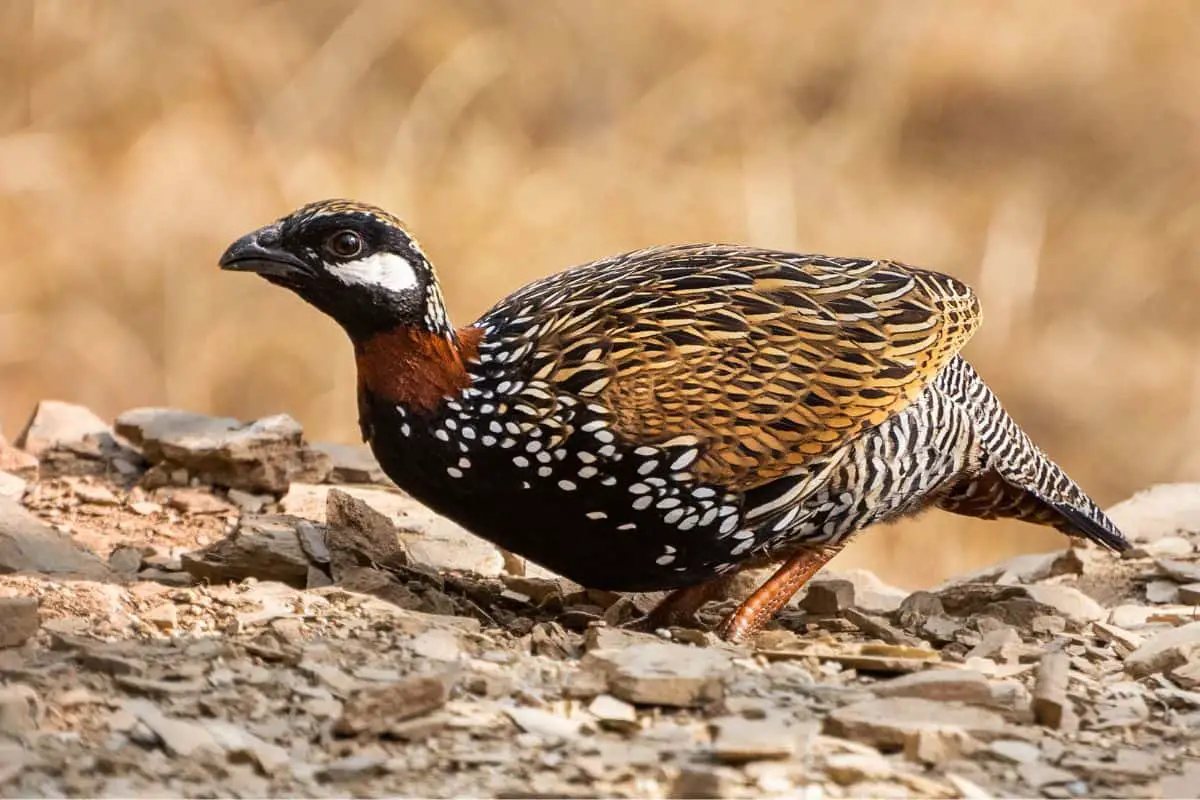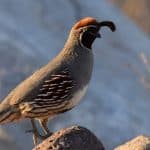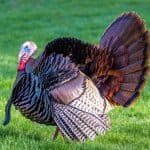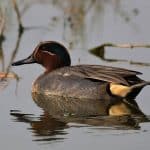Common Name: Black Francolin
Scientific Name: Francolinus francolinus| Size | Diet | Range in Hawaii | Status in Hawaii |
|---|---|---|---|
| 13 in - 14 in. | seeds, grains, insects, worms, snails, and small invertebrates | Common on all islands | Introduced, Least Concern |
The black francolin (Francolinus francolinus) is a fascinating bird species known for its distinctive black plumage and loud, distinctive calls. These birds are native to the Indian subcontinent and are often found in grasslands, scrublands, and agricultural areas. With their striking appearance and unique vocalizations, black francolins are a favorite among birdwatchers and nature enthusiasts.
In addition to their native range, they have been introduced to other parts of the world, including Hawaii. Despite their popularity, black francolins face threats from habitat loss and hunting, making conservation efforts crucial for their survival.
Black francolin
Appearance
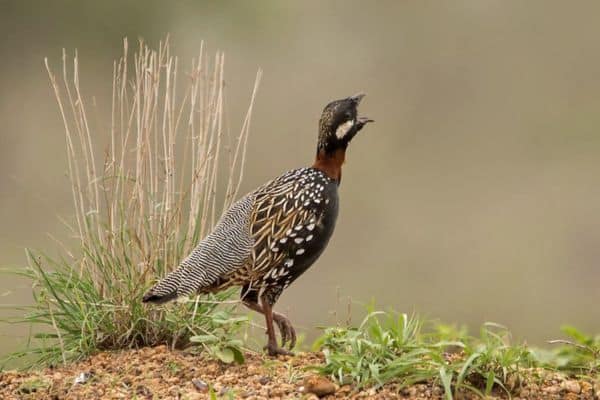
The Black Francolin is a medium-sized bird, measuring approximately 13-14 inches (33-36 centimeters) in length. It has a robust build with a rounded body shape and a short, strong beak. The male Black Francolin is striking, with glossy black plumage accented by white speckles and distinctive white cheek patches.
In contrast, the female has more subdued coloring, featuring a mottled brown and black pattern with less pronounced markings. Both genders have red legs and a reddish bill, adding a touch of vibrant color to their overall appearance.
Diet
The Black Francolin has an omnivorous diet that consists of a variety of food sources. They primarily feed on seeds, grains, and vegetation such as grasses, leaves, and shoots. In addition to plant matter, they also consume insects, worms, snails, and small invertebrates.
Black Francolins use their strong beaks to forage on the ground, scratching and pecking at the soil to uncover food items. They may also feed on fallen fruits and berries when available. This adaptable diet allows them to thrive in a range of habitats, from grasslands and agricultural fields to scrublands and forest edges.
Nesting
Black Francolins build their nests on the ground, typically concealed within vegetation or under the cover of bushes. The female takes the primary responsibility for constructing the nest, which is a shallow scrape lined with grass, leaves, and other plant materials. The nest is well-hidden to provide protection from predators and the elements.
The female lays a clutch of 6-10 eggs, which are pale brown with speckles, and she incubates them for about 18-20 days. Once the chicks hatch, they leave the nest and are able to move around and forage shortly after.
The male is generally not involved in incubation or rearing the young, but he may assist in protecting the nesting territory. The nesting behavior of Black Francolins reflects their adaptation to ground-dwelling and their reliance on camouflage to ensure the survival of their offspring.
Behavior
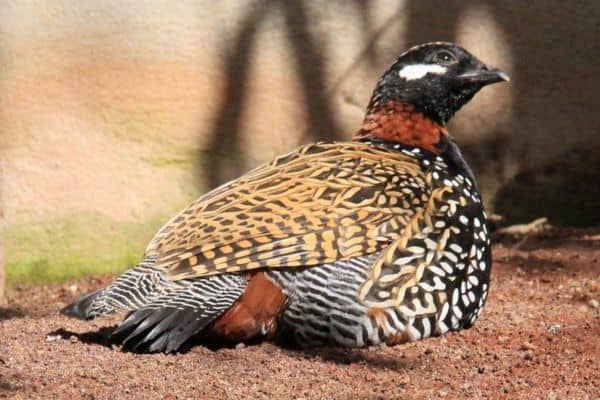
The Black Francolin is known for its intriguing behaviors. These birds are primarily ground-dwelling and prefer to move on foot rather than taking to the air. They have a distinctive way of walking, characterized by a deliberate and jerky gait with frequent stops to scan the surroundings.
Black Francolins are often solitary or found in small groups, although during the breeding season, the males become more vocal and territorial. They mark their territories by calling loudly, and their distinctive calls can be heard resonating through their habitat.
Males engage in elaborate courtship displays, which involve puffing up their feathers, raising their tails, and displaying their distinctive black and white plumage. These displays are often accompanied by calling and posturing to attract females. When it comes to foraging, Black Francolins primarily search for food on the ground.
They scratch and dig in the soil, using their strong bills to unearth seeds, insects, worms, and other small invertebrates. They are also known to feed on fallen fruits and berries when available. Black Francolins are generally non-migratory and prefer to stay within their established territories.
They are well-adapted to their habitats, which include grasslands, scrublands, and agricultural fields. Their behavior and distinct vocalizations make them a captivating species to observe in their natural environment.
Habitat
The Black Francolin is a bird species that inhabits a variety of habitats across its range. They are commonly found in grasslands, agricultural fields, scrublands, and open woodlands with dense undergrowth.
They have a preference for areas with tall grasses, shrubs, and bushes that provide cover and protection. Black Francolins require a mix of open spaces for foraging and areas with adequate vegetation for nesting and roosting.
They can adapt to both dry and moist environments, depending on the availability of water sources nearby. They are often associated with areas near water bodies such as marshes, wetlands, and riversides.
These birds are well-suited to habitats with a mosaic of vegetation types, as they rely on a combination of dense cover for protection and open areas for foraging. They are known to thrive in agricultural landscapes, where they can find an abundance of food resources such as seeds, grains, and insects.
Range
The introduction of the Black Francolin to Hawaii is believed to have occurred in early 1959 when a small number of individuals were introduced for hunting purposes. Over time, some of these birds managed to adapt and establish self-sustaining populations in specific areas of the islands, particularly on the island of Kauai.
Conservation Status
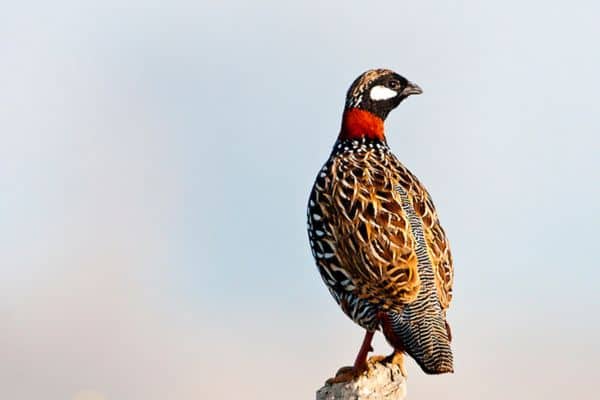
The conservation status of the Black Francolin is assessed as “Least Concern” by the International Union for Conservation of Nature (IUCN). While the species has a relatively large range and a stable population, localized threats and habitat loss in certain regions have raised concerns.
Interesting Facts
1. Vocalizations
Male Black Francolins are known for their distinct and loud calls, which are often described as a melodic “krra-ow” or “ka-rrroo” sound. Their calls are used to establish territories and attract mates.
2. Unique Courtship displays
During the breeding season, male Black Francolins perform elaborate courtship displays, including puffing up their feathers, raising their tails, and calling loudly to attract females.
3. They are Non-migratory
Black Francolins are generally non-migratory birds and prefer to stay within their established territories. They are well-adapted to their habitats and have the ability to thrive in various environments.
4. Communal roosting
Outside the breeding season, Black Francolins often roost in communal groups, gathering together for safety and social interaction.
Frequently Asked Questions
1. How do Black Francolins build their nests?
Female Black Francolins build their nests on the ground. The nests are shallow scrapes lined with grass, leaves, and other plant materials.
2. Are Black Francolins kept as pets?
Yes, Black Francolins are sometimes kept as pets by bird enthusiasts. However, it’s important to note that keeping them as pets requires proper permits and adherence to regulations in certain countries.
3. Can Black Francolins fly?
Yes, Black Francolins are capable of short-distance flight. However, they are primarily ground-dwelling birds and prefer walking or running on the ground rather than flying.
4. Do Black Francolins migrate within their range?
While Black Francolins are generally non-migratory, they may exhibit some local movements within their established territories in search of food and suitable breeding sites.
5. Can Black Francolins mimic sounds or human speech?
No, Black Francolins are not known for their mimicking abilities. They primarily communicate through their distinct calls.
